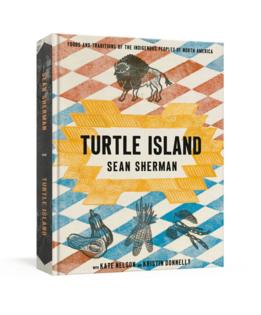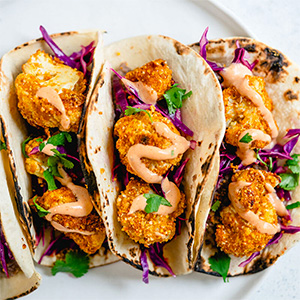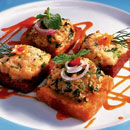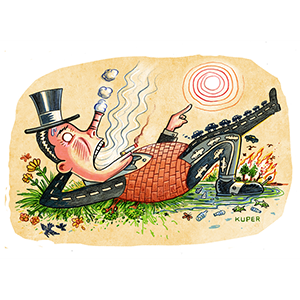Why Sean Sherman's latest cookbook 'Turtle Island' is essential reading
Published in Variety Menu
When Sean Sherman holds his new book, “Turtle Island,” he can feel the weight of it, both literally and symbolically.
The James Beard Award–winning chef behind Owamni, the Indigenous Food Lab and the nonprofit NATIFS has created what he calls an “essential” volume: a vast, 400-plus-page journey through North America’s Indigenous foodways.
“It was a massive amount of work,” Sherman said. And necessary, he added, “because the book just didn’t exist before.”
On the surface, “Turtle Island” is a cookbook. Look a little deeper and it doubles as a history textbook and even a travel guide, one Sherman and a team of writers and photographers spent three years building. “It feels like an encyclopedia,” Sherman said.
The recipes, organized by regions such as the Great Plains, Great Lakes and Desert Lands, are touchpoints through North America’s landscapes and seasons, offering culinary histories that often have been erased.
The title comes from a creation story that the world was formed on the back of a turtle, Sherman explained. “Turtle Island” spans 13 chapters — echoing the 13 segments of a turtle’s shell and the 13 moons many tribes recognize in their calendars — and features contributions from collaborators Kate Nelson and Kristin Donnelly, with photography from Jaida Grey Eagle and David Alvarado.
“My hope is it just opens up people’s minds a little bit, especially with what’s going on in today’s world with more things going backwards,” Sherman said. “There’s a lot of Black and Indigenous histories being removed and even demonized on top of that. It’s really important to put these stories out there, because historically, we have been invisible.”
For Sherman, who grew up on the Pine Ridge Reservation in South Dakota, the book expands his mission to illuminate Indigenous food systems and history, and to reframe how people see North America.
“The purpose wasn’t to be like a museum piece,” he said. “The purpose was really about the future.”
Sherman spoke with the Star Tribune about the process behind “Turtle Island,” the regions it explores, and why it belongs on North American bookshelves. The conversation has been edited for length and clarity.
What did you want “Turtle Island” to illuminate that other works have overlooked?
The purpose was to try to shed some light on the immense amount of diversity that’s always been invisible, and just to showcase how much there is to think about and to consider and to be aware of, no matter where you are in North America, and even beyond that.
The Great Plains section is especially personal for you. How did you go about researching the other regions across North America?
I had already traveled and made many connections all over the place. Some were memories of what I’ve done in the past decade-plus, since I’ve opened up the Sioux Chef [his Indigenous foods company rooted in tribal and wild-sourced ingredients]. I’ve been able to visit and work with and travel to so many places across Mexico and the U.S. and Alaska and parts of Canada.
But also just having the team, especially Kate Nelson, who used her journalistic approach — we’d talk about who to talk to, the memories, and she would follow up and really connect with people and pull stories out of them. I didn’t want to come across as mansplaining everything from a [single] perspective. I wanted it to be very open for people to be talking about the uniqueness of those regions and tribes and some of the things that are deeply connected out there. So it was very considerate and intentional, the way we pulled the storytelling together.
And Kristin [Donnelly], the other co-author, was somebody who had the ability to manage something so complex and so large and help us pull it together.
What did you encounter in the research that surprised you?
There’s quite a bit. We weren’t writing a book on tradition, so we weren’t trying to just highlight every traditional recipe. It was really about imagining what’s possible and using that philosophy and challenge that I created so long ago — cutting away colonial ingredients and using only Indigenous pieces and creating all these recipes with just those ingredients of those distinct regions.
It could be really challenging to go backwards, especially places like Yucatán in Mexico. It wasn’t trying to completely reframe what Mexican food was, but just kind of put it through this challenge of what’s possible by creating recipes using only Indigenous ingredients to those regions, with consideration of the Indigenous knowledge keepers and peoples that are still down there.
You’ve shared parts of your story before. Did this feel different?
I get centered a lot. Of course, it’s because I’ve become the face of what we do with all of our organizations. But I wanted to write out for myself just what my experience was, of how I got to where I am, and share those stories. I’m happy to use this attention to help propel us forward. But I wanted to share all of these amazing, diverse perspectives that live out there, too.
You hinted there might be more volumes to come, even focusing on other continents.
I think it kind of would have to be, because we had to just barely scratch the surface. There was no way we could talk about every tribe, every food piece. We had to be very selective. It’s already a massive book — we turned in over 220,000 words with the manuscript. But there’s plenty of opportunity to do more volumes. I think it definitely set the tone of what’s possible.
It does give off that feeling that this is something you want to own, a keepsake.
We’ve been doing a lot of interviews leading up to it and one word that keeps coming through is “essential.” That’s a big word for something like a cookbook.
What are you hoping readers, who didn’t grow up with the concept of Turtle Island and the harmony and balance found in Indigenous foods, will take away from this book?
I just hope that people can look at North America through a different lens. We were able to weave in a lot of historical references and talk about really difficult things throughout this cookbook, and I think it’s really important for people just to be curious. Food is a massively important language that we all share. So I hope this book can open people’s minds — to see this wonderful, diverse foundation of North America, and how there’s so much to learn. It’s this exercise in wiping away colonial borders and looking at North America as a whole, but still celebrating so much diverse tapestry of culture and culinary flavors.
What are some recipes that stand out for you?
The one that I really liked was from my own region — the waháŋpi, which just means soup in Lakota. It’s got dried bison meat and dried thíŋpsiŋla (prairie turnips) that were reconstituted, and prairie onions. It was so simple, but to me, it just tasted like home, and it felt like it ignited something.
Some of these recipes will be comforting recipes, some of these will be very odd to people, and some of these recipes you might not ever be able to replicate. The publisher was fine with that. We don’t have to have everything at our will, or at our local Whole Foods. Of course we offer some suggestions, but some of these you might not even have the chance to attempt to try unless you’re in the right region around the right people at the right season.
So it’s a cookbook that doesn’t need to be cooked through.
It doesn’t have to be. That was kind of the purpose. I feel like the majority of the people who have the book will maybe, if they’re traveling to a different region of the United States, want to reference it to learn more about that particular region. Like if they’re going out to Alaska or are visiting Mexico again and just looking at it from a different perspective. I feel like the book will come in very handy in those instances.
What makes you most proud of “Turtle Island”?
It just felt like such an important piece to put out. And I was so excited for the entire team. Everybody played off each other’s strengths so perfectly. The photography team was amazing. Even my partner, Mecca Bos, did a lot of the recipe testing. All this crazy stuff was coming into our house throughout the last couple of years, just trying to test everything out. Like, where am I going to find some beaver? Where am I going to get some moose? Where am I going to get some javelina? I helped her find it. There’s a lot of energy behind building it and I’m just excited.
More information
“Turtle Island: Foods and Traditions of the Indigenous Peoples of North America” by Sean Sherman with Kate Nelson and Kristin Donnelly (Clarkson Potter, $45) was released Nov. 11. It’s widely available in bookstores and online at seansherman.com.
Celebrate ‘Turtle Island’
Sherman is launching his tour in grand fashion at the Guthrie Theater, which will be the new home of Owamni, with The Sioux Chef: Make Americas Borderless Again – Turtle Island Cookbook Tour.
What: Sean Sherman will appear with his “Turtle Island” collaborators (Kate Nelson, Kristin Donnelly, David Alvarado, Jaida Grey Eagle, Mecca Bos and Tess Bouska) at the event with Indigenous food, music and storytelling; comedy from “Reservation Dogs” actor/comedian Jana Schmieding and local comedian Trish Cook; and a panel discussion moderated by the book’s editor, “The Splendid Table” host Francis Lam.
When: Tuesday, Nov. 18. Doors at 6 p.m. (with a premium pre-party beginning at 5:30 p.m.); Guthrie Theater, 818 S. 2nd St., Mpls.
Tickets:$55.86 to $181.36 are available at Eventbrite.
Sean Sherman on TV
See Sean Sherman talk about “Turtle Island” on Comedy Central’s “The Daily Show,” Wednesday, Nov. 19.
©2025 The Minnesota Star Tribune. Visit at startribune.com. Distributed by Tribune Content Agency, LLC.










Comments